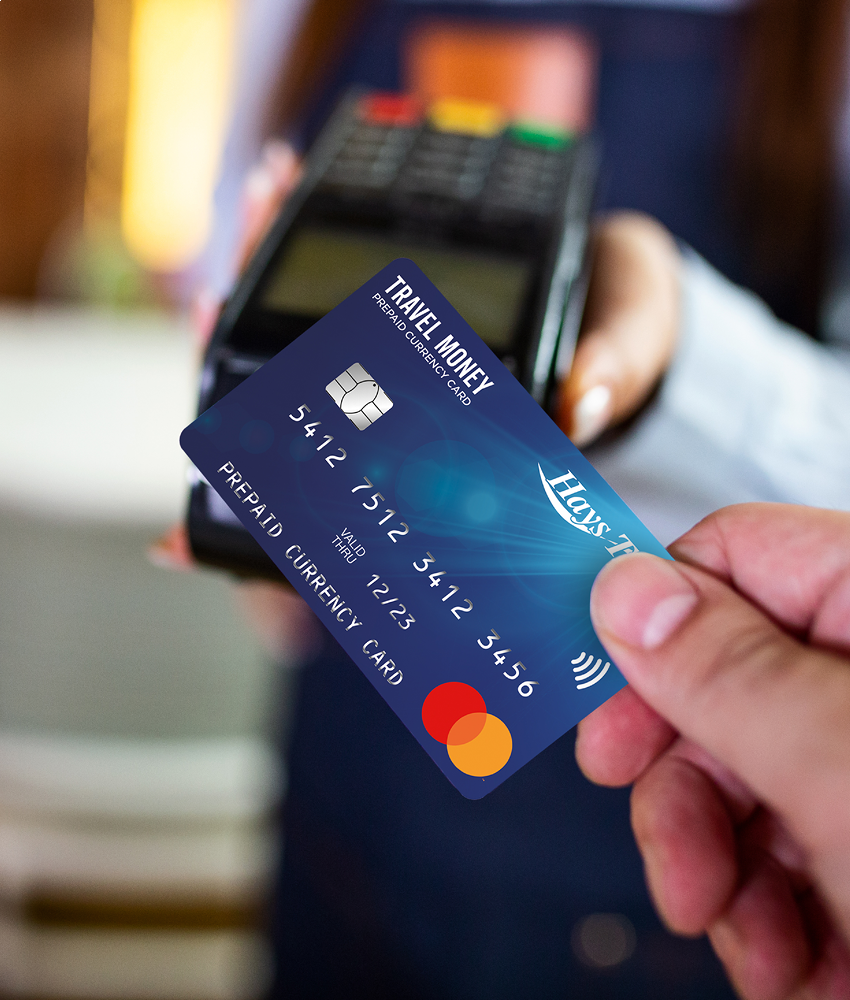Travelers preparing for their summer vacations have received a word of warning regarding the use of costly debit and credit cards. Experts advise against relying heavily on such cards while abroad due to the potential for incurring currency exchange fees and cash withdrawal charges. To avoid these financial setbacks, travel advisors recommend exploring alternative payment options. One such option is obtaining a prepaid travel card, specifically designed for use during international travel. These cards allow users to load a specific amount of currency onto the card in advance, providing a more predictable and cost-effective method of payment.какие кредитные карты не стоит выбирать
The costs associated with fees can indeed vary among different providers and cards, but the cumulative impact can be significant.
According to Andrew Hagger, a personal finance expert at Moneycomms.co.uk, using a standard bank debit or credit card while on vacation abroad can lead to substantial expenses due to additional charges. However, he advises travelers to consider more cost-effective alternatives that are worth considering alongside their passport.
Hagger suggests exploring alternative payment options that offer lower fees and better exchange rates. One such alternative is using prepaid travel cards, which allow users to load a specific amount of currency onto the card in advance, thereby avoiding unfavorable exchange rates and excessive charges.
By being proactive in selecting affordable payment methods, travelers can minimize unnecessary expenses and make the most of their vacation budget.
When using cards abroad, fees generally fall into two categories:
- transaction fees in non-sterling currencies
- ATM withdrawal fees.
Transaction fees in foreign currencies typically range from 2.75% to 2.99%. Additionally, making a small purchase of £5 on drinks and snacks could result in an additional cost of £1.15. Although this may seem insignificant at first, multiple small transactions throughout the day can quickly accumulate and lead to substantial expenses.
To help you make informed decisions and save money during your summer travels, we will explore the best and worst credit and debit cards to use abroad. By choosing the right card, you could potentially save up to £79.
It’s important to note that different card providers have varying fee structures, exchange rates, and perks when used internationally. Some cards offer more favorable terms, such as lower transaction fees or no foreign exchange fees, while others may impose higher charges.
By selecting the most suitable card for your needs, you can enjoy your summer vacation without unnecessary financial burdens and potentially save a substantial amount of money.

Best debit cards
When it comes to the best debit cards for travel, there are several options that do not incur expenses or fees for ATM withdrawals abroad, making them convenient and cost-effective choices. While opening a new bank account may be necessary, you can still maintain your primary account and transfer funds if you prefer not to switch completely.
Here are some recommended debit cards for travel:
Chase Bank:
- No fees for spending or ATM withdrawals abroad.
- Allows withdrawals of up to £500 per day or £1,500 per month overseas.
- Offers the additional benefit of earning 1% cashback on all expenses.
Starling:
- No fees for spending or ATM withdrawals while traveling.
- Allows withdrawals of up to £300 per day.
Monzo:
- Does not impose markup on exchange rates.
- Allows free withdrawals of up to £250 from ATMs over a few days.
- After surpassing the free limit, a 3% fee will be charged on subsequent withdrawals.
These debit cards provide favorable terms for international use, ensuring you can conveniently access your funds without incurring excessive fees. It’s important to note that while these cards offer certain advantages, it’s always a good idea to review the terms and conditions of each card before making a decision.
By choosing one of these debit cards, you can enjoy a hassle-free and cost-efficient travel experience while effectively managing your finances abroad.
Worst debit cards
According to the Encyclopedia Britannica (BSE), customers of TSB, HSBC, and Lloyds Bank may face additional fees when using their debit cards abroad. Here’s a breakdown of the fees associated with each bank:
TSB:
- Customers using TSB debit cards abroad will be charged an extra fee of 2.99% in addition to the purchase amount, along with an additional £1 per transaction for transactions in British pounds.
- For example, if you spend £50 at a restaurant, you would actually pay £52.49, and for a £100 purchase, you would be charged £103.99.
- In addition, there is an extra fee for ATM usage, which includes a transaction fee of 2.99% and an ATM fee of 1.5%.
- The minimum ATM fee is £2, and the maximum is £4.50.
- So, if you withdraw £100 from an ATM, you would have to pay an additional £4.99, and for a larger withdrawal of £1,000, the additional fee would be £44.92.
HSBC:
- HSBC charges a transaction fee of 2.75% in non-sterling currencies for all purchases made abroad.
- For example, if you buy a pair of sunglasses for £250, you would actually pay £256.88, an additional £6.88.
- Similar to TSB, HSBC also charges additional fees for ATM withdrawals while abroad.
- There is a transaction fee of 2.75% in non-sterling currencies, along with an ATM fee of 2%.
- So, if you withdraw £500 in cash, you would pay an additional £23.76.
Lloyds Bank:
- Lloyds Bank imposes a transaction fee of 2.99% in non-sterling currencies, similar to TSB, but without the additional £1 charge per transaction.
- If you make a purchase for £50, you would pay an additional £1.49.
- It’s worth noting that although this may not seem like much, these fees can quickly accumulate during your vacation.
- Lloyds Bank also charges additional fees for ATM usage, including a transaction fee of 2.99% in non-sterling currencies, along with a £1.50 fee.
- If you withdraw £250 from an ATM, you would pay an additional £8.98.
Being aware of these fees can help you plan your spending and make more informed decisions when using your debit card abroad. Consider comparing the fee structures of different banks and exploring alternative payment options to minimize unnecessary expenses during your travels.
Best credit cards
When using a credit card abroad, it’s crucial to consider the associated fees. However, if you’re making significant purchases overseas, the benefits and protections offered by credit cards may justify the fees. Here are some credit cards to consider and those to avoid:
Recommended Credit Cards:
1. Barclaycard Rewards:
- No fees or interest on purchases or cash withdrawals abroad, provided the credit card statement is fully paid off within the designated timeframe.
- Offers a small bonus of 0.25% cashback on spending.
2. Halifax Clarity:
- No foreign exchange fee for purchases or cash transactions at ATMs.
- However, interest charges apply to cash withdrawals. For example, a £100 ATM withdrawal may accrue approximately £2.30 in interest over a 30-day period.
Credit Cards to Avoid:
1.Virgin Money:
- Cash withdrawals at ATMs incur a 5% fee and a 2.99% transaction fee in non-sterling currencies.
- For instance, a £250 withdrawal would result in an additional fee of £19.98.
- Purchases at stores and restaurants incur a 2.99% transaction fee in non-sterling currencies. Therefore, a £100 purchase would cost an additional £2.99.
2. MBNA:
- Cash withdrawals at ATMs abroad are subject to a 5% fee and a 2.95% transaction fee in non-sterling currencies.
- For a £100 ATM withdrawal, you would incur an additional charge of £7.95.
- Purchases made using the credit card incur a 2.95% transaction fee in non-sterling currencies. For a £1,000 purchase, you would pay £29.50 in fees.
3. Santander:
- Cash withdrawals using Santander credit cards at ATMs abroad result in a 3% fee (minimum £3) and a 2.95% transaction fee in non-sterling currencies.
- For example, a £500 withdrawal would incur an additional fee of £29.74.
- Purchases made using the card incur a 2.95% transaction fee in non-sterling currencies. Thus, a £100 purchase would cost an additional £2.95.
Before choosing a credit card, conduct thorough research and consider factors such as fees, foreign exchange rates, and benefits. Checking your credit report for accuracy and using an eligibility checker can help you understand your chances of approval and protect your credit rating.
By selecting the right credit card for your needs, you can make international transactions more convenient while managing costs effectively.
©russwatch.com




